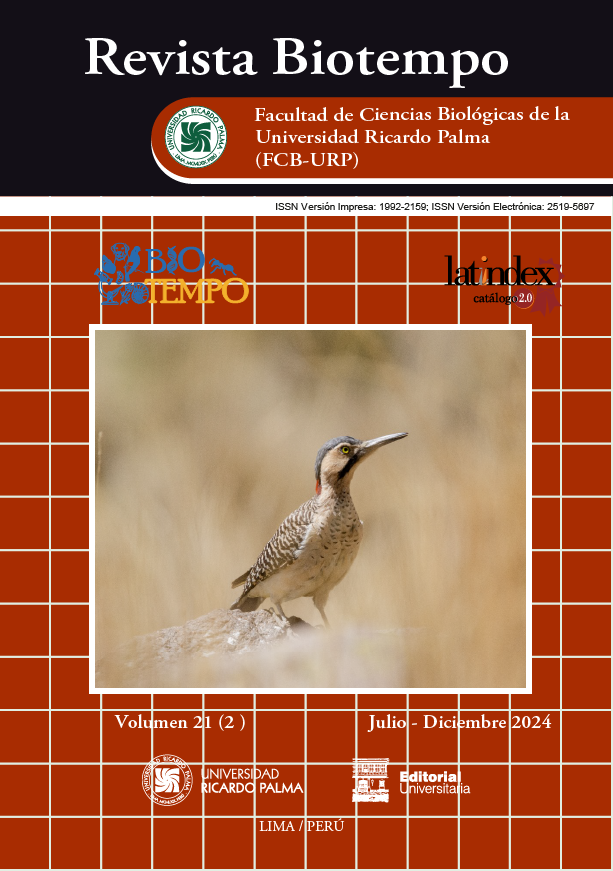Inventory and bird watching points on the route Hieleros in the Bolívar province, Ecuador
DOI:
https://doi.org/10.31381/biotempo.v21i2.6696Keywords:
Birdlife, Quindigua , Route, Sighting pointsAbstract
Paramo ecosystems are complex and of great value for biodiversity. Their complexity currently makes them fragile due to climate change and the increase in the agricultural and livestock frontier threatens the variety of birdlife in these areas. This research was carried out in the high Andean ecosystem, specifically on the Ruta del Hielero de Bolívar, covering an area of 9 km that begins at 4361 meters above sea level at the entrance to the Chimborazo Fauna Production Reserve and concludes at 3500 meters above sea level in the Mirador Playa Urcu 4 kilometers from the Community of Quindigua Central, Ecuador. The study included various climatic zones that host endemic flora, crucial for the subsistence of avifauna adapted to these habitats. This research aims to determine the species of birds that exist on the Route and locate their sighting points. The methodology applied consisted of the transect technique, tracing five along the route. In addition, an observation sheet was used based on identification guides, applications such as E bird, and photographs of the species sighted. 30 species distributed in 6 orders and 14 families were identified. All the birds are native or resident, with the exception of Muscisaxicola maculirostris (d'Orbigny & Lafresnaye, 1837), the only migratory species recorded. It should be noted that a representative species of the place is Oreotrochilus chimborazo (De Lattre & Bourcier, 1846) due to its abundance. All inventoried individuals are classified as (Least Concern LC) according to the IUCN (International Union for Conservation of Nature) Red List and are under regulation in Appendix II of CITES (Convention on International Trade in Endangered Species of Wild Fauna and Flora). Seven important points for bird watching were determined, highlighting the Playa Urcu Viewpoint at an altitude of 3472 meters above sea level, where up to 21 of the 30 identified species can be observed. To determine these sighting points, the ArcGIS tool was used, based on the greatest number of birds sighted in each location. The study provides a basis for conservation and birdwatching tourism on the Ruta del Hielero de Bolívar, highlighting the importance of specific areas within the high Andean ecosystem that favor birdlife biodiversity.










